RECOVERY EXHIBITION
Recovery Print Collaboration Project: Caroline Giniuanas, Fiona Vaughan, Brooklyn Sulaeman, Cheryle Yin Lo, Kate Reid, Freedom Wilson
Remembering experiences of grief amidst the catastrophic bushfires that had decimated mammal, bird and vegetation populations within the Greater Blue Mountains World Heritage Area over the summer of 2019 and 2020, connections germinated amongst the Recovery Print Collaboration Project participants. That summer the sun was hot and the water droplets few. It was a horrifying time of high anxiety, and of not knowing. With most of our loved bush sites closed off after the fires, it was a long wait until we began to know what really might have been lost to the flames. The social setbacks of Covid 19 limited opportunity for our community to discuss and work through their bushfire ordeals.
So when artists Caroline Giniuanas, Fiona Vaughan, Brooklyn Sulaeman, Cheryle Yin Lo,Kate Reid and Freedom Wilson began hearing from the Blue Mountains World Heritage Institute Citizen Scientists, discussing observations and building a direction for the collaborative Recovery Print Collaboration Project the exchange was initially sombre. We began a dialogue, working within regulations at the time, via zoom media. Kate Reid our project manager, encouraged regular online catch ups and some delightful walking meetings; artecize.
These artists share intimate long term relationships with Blue Mountains landscapes, caring by eco-monitoring to document the effects of climate change on country, participating in bush regenerating programs, environmental advocacy, walking and creative journalling. Deep reflections and stories of before, during and post recent bushfire circulated. Sharing our mutual values and love, observing changing environments in the local bushland, our spirits elevated. Monica Nugent and the Citizen Scientists, had been regularly monitoring bushfire affected sites through out the Blue Mountains bush, discovering species which were repopulating decimated areas. As positive data and specialist knowledge from surveyed plants and animals emerged our mood lifted and creative momentum became excited. But still an underlying and nauseating urgency steeped in observation about the fragility and vulnerability of regrowing bush persisted. Our instincts, artistic and environmental responses to the regrowth situation was motivated by the conscientious actions of the eco monitors and their care for regrowing bushland. They were compelled to respond in a positive role for the regeneration of devastated environments that we loved, and this inspired us immensely. Diverse stories intersected amongst the Recovery Print Collaboration group via artistic documentation expanding our thoughts and building on our personal creative practice’s. Unprecedented populations of alluring the Actinous forsythii (Pink Flannel Flower), and the insects that relished such large numbers of flowers diverged the tragedy of mammal lives lost and species of opportunistic plants repopulating areas of bare ashen soil, places that had previously been refuge to dense trees, shrubs, flowering plants and grasses.
Discussions proliferated into lively dialogue about collaborative print possibilities for our upcoming screen based print workshop. But lockdown was extended, so we needed to pivot quite quickly, finding a print media suitable for backyard processing, and sympathetic to our visual documentation of regrowing vegetation and dialogue so far. Cyanotype printmaking harnesses sunshine to expose an opaque image, and links back to note taking by early botanists. The process was fascinating! I made up lockdown cyanotype kits for artists and dropped off to letterboxes. The following weeks we filled each others inboxes with images of cyanotype experiments and explorations, and weather commentary. Wild possibilities transpired as reworking suggestions circulated, we were pretty determined to reuse materials for all disaster prints. As an overcast day fell, we researched and soaked our developing artworks in various teas, reworking and discussing until satisfied.
Weather played a critical role in the success of so many aspects of the Recovery Print Collaboration Project, reminding us of the unpredictability of the natural world, but also the human impacts on climate change. We looked, walked and discussed the shedding of blackened Eucalyptus bark exposing brilliant fresh trunks as nurturing mulch was created, and referenced this phenomenon with shape in our work. The extensive biodiversity within the Blue Mountains National Park, the loss of mammals, the work and hands of Eco-Monitors and all volunteers, plant regrowth, saprotrophic fungi transforming burnt environments, opportunistic weeds, birdlife and human impacts on bushland all emerged as images throughout our cyanotype prints.
Very different approaches to the process revealed unique methods in artistic practice. We began to know and appreciate each other for unexpected skills. Together we worked through the frustratingly wonderful complexities and unpredictabilities of cyanotype printing and from the isolation of our backyards. Completed artworks were exhibited amongst tall healthy trees for a bushland audience, when we were able to finally meet together face to face. Our skill base included Kate’s circus rigging, which was employed sensitively, as she minimised impacts on bushland, working respectfully in such a beautiful place. It was a relief when works were rigged for exhibition and an exciting moment to see individual works eventually come together. I think we all felt a sense of relief, happiness and exhaustion. It was terrific to be allowed to spend a day together as Andrew Gelao and Ona Janzen moved between artworks filming.
A generous sharing of knowledge throughout the concept and printmaking process strengthened our own personal values and commitment to the regeneration of the incredible biodiversity regrowing, just beyond our Blue Mountains doorsteps.
Freedom Wilson

Artwork by Caroline Giniunas, Image by Ona Janzen
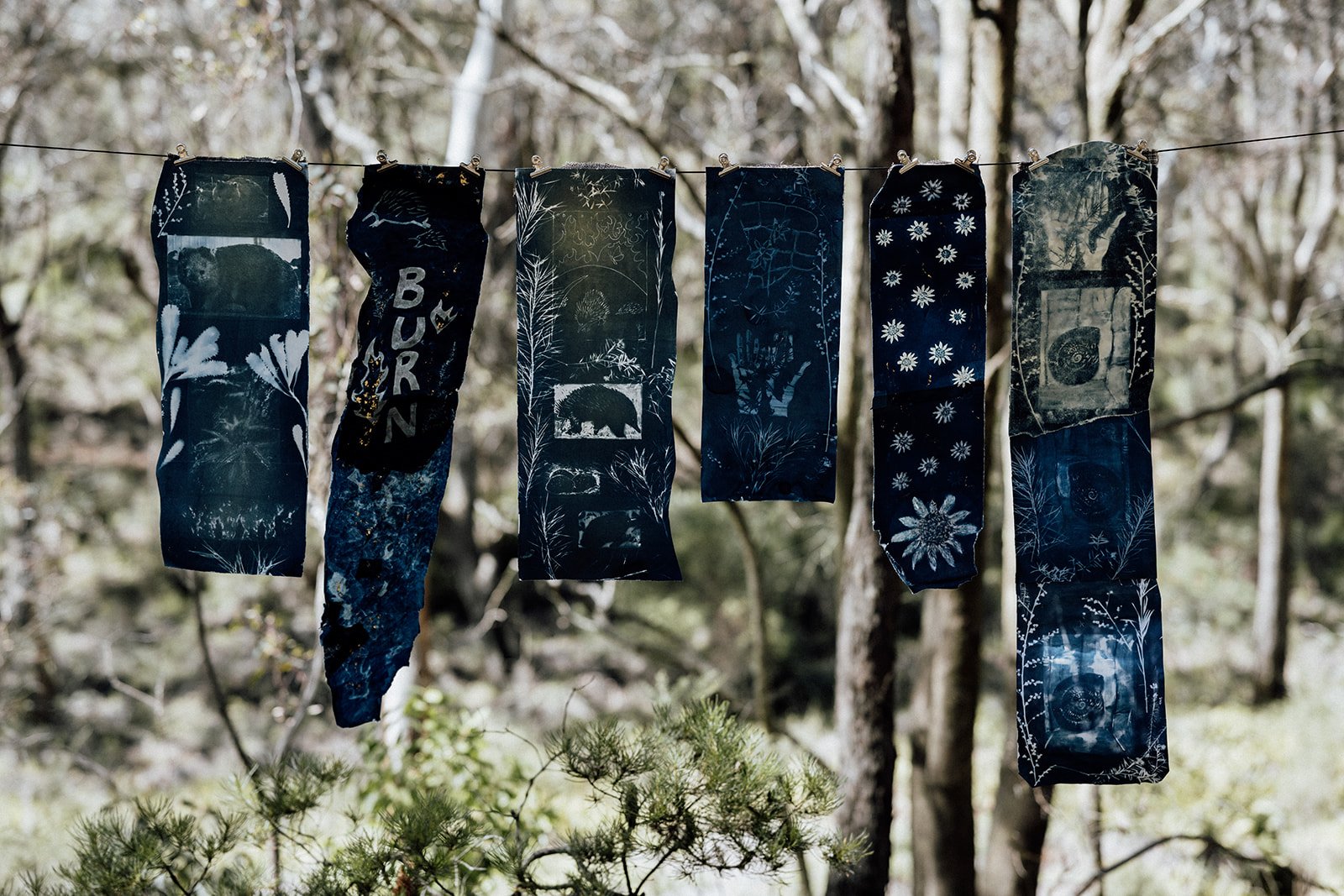
Artwork by Caroline Giniunas, Image by Ona Janzen
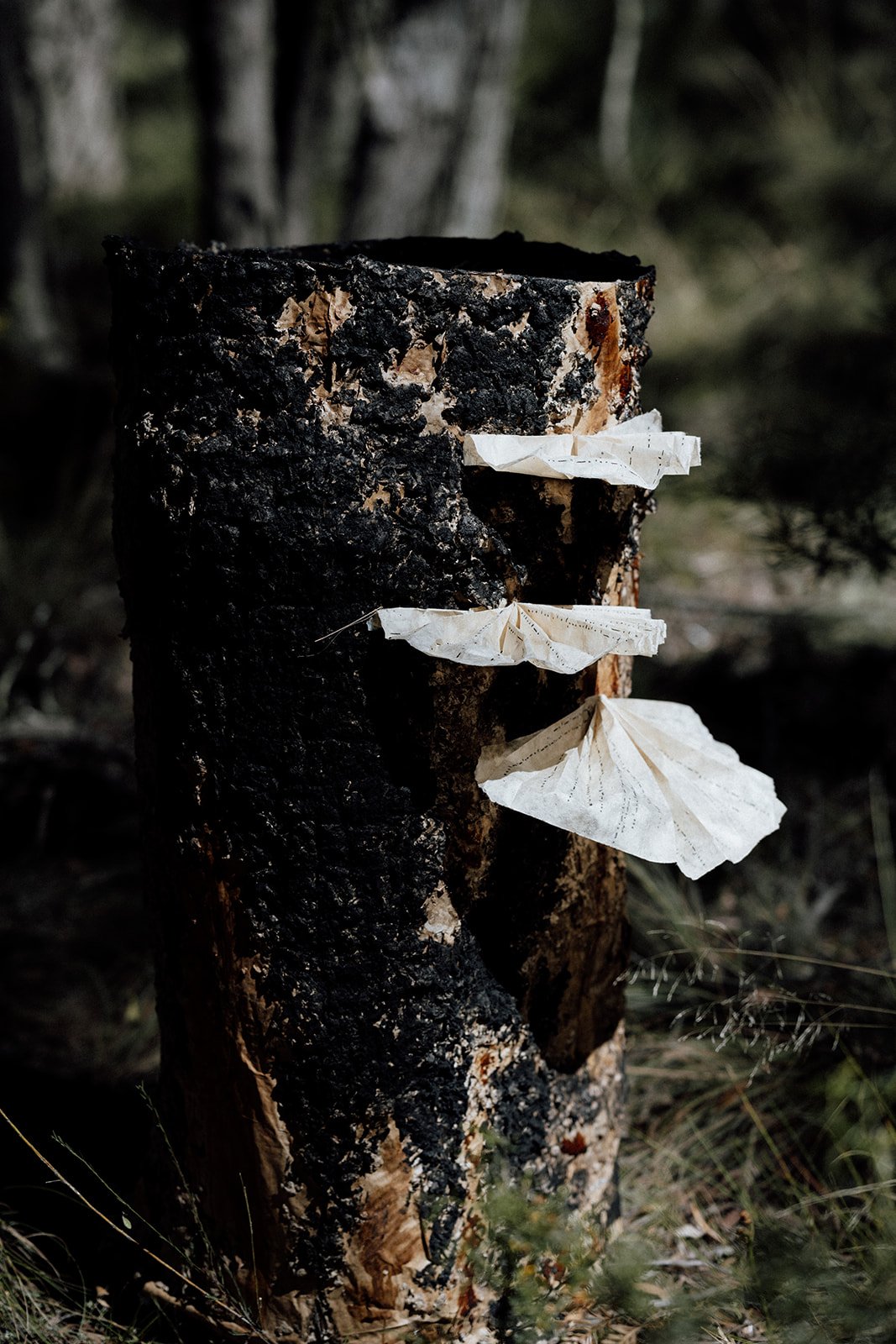
Artwork by Caroline Giniunas, Image by Ona Janzen

Artwork by Caroline Giniunas, Image by Ona Janzen

Artwork by Freedom Wilson, Image by Ona Janzen

Artwork by Freedom Wilson, Image by Ona Janzen

Artwork by Freedom Wilson, Image by Ona Janzen
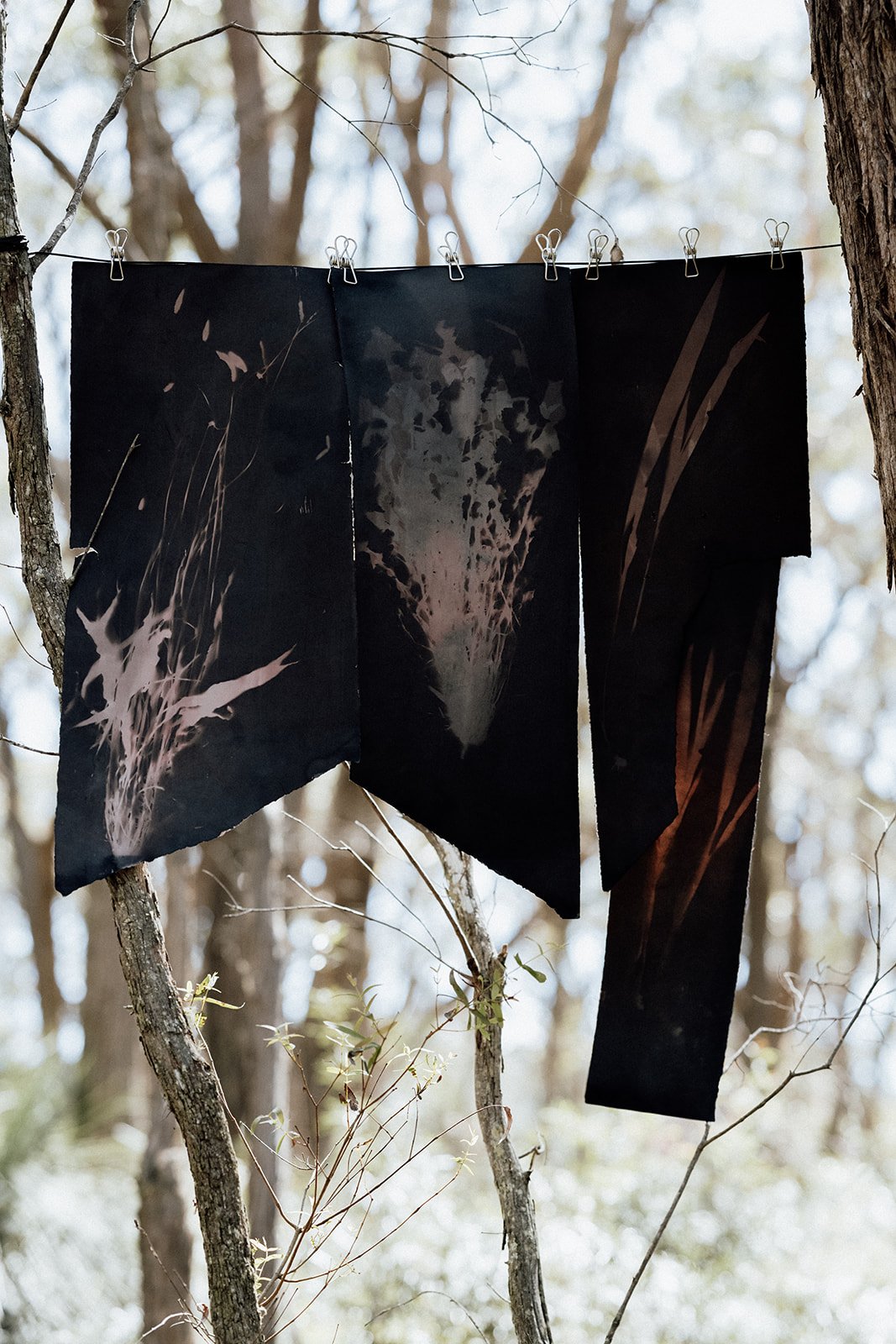
Artwork by Freedom Wilson, Image by Ona Janzen

Artwork by Cheryle Yin Lo, Image by Ona Janzen
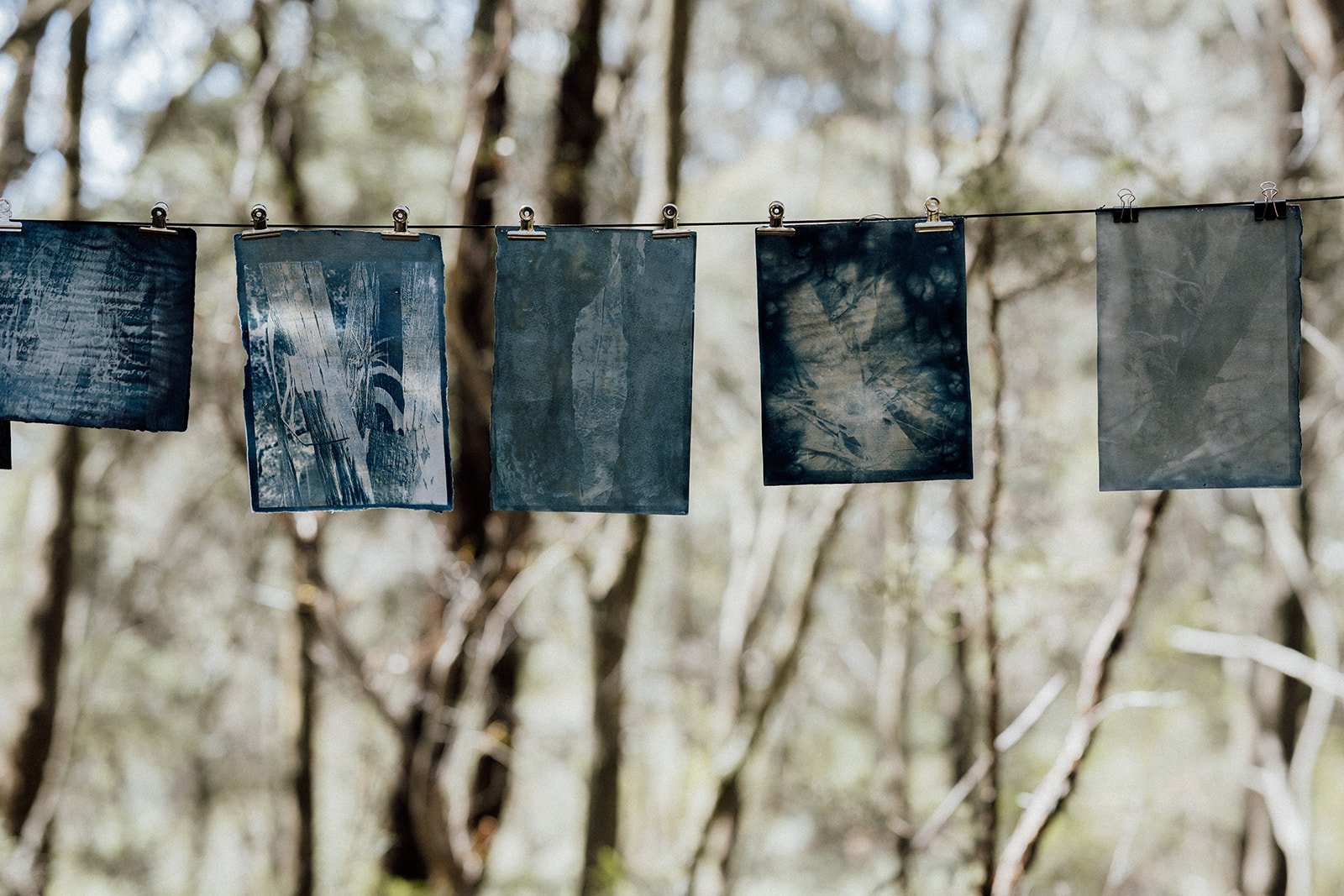
Artwork by Cheryle Yin Lo, Image by Ona Janzen
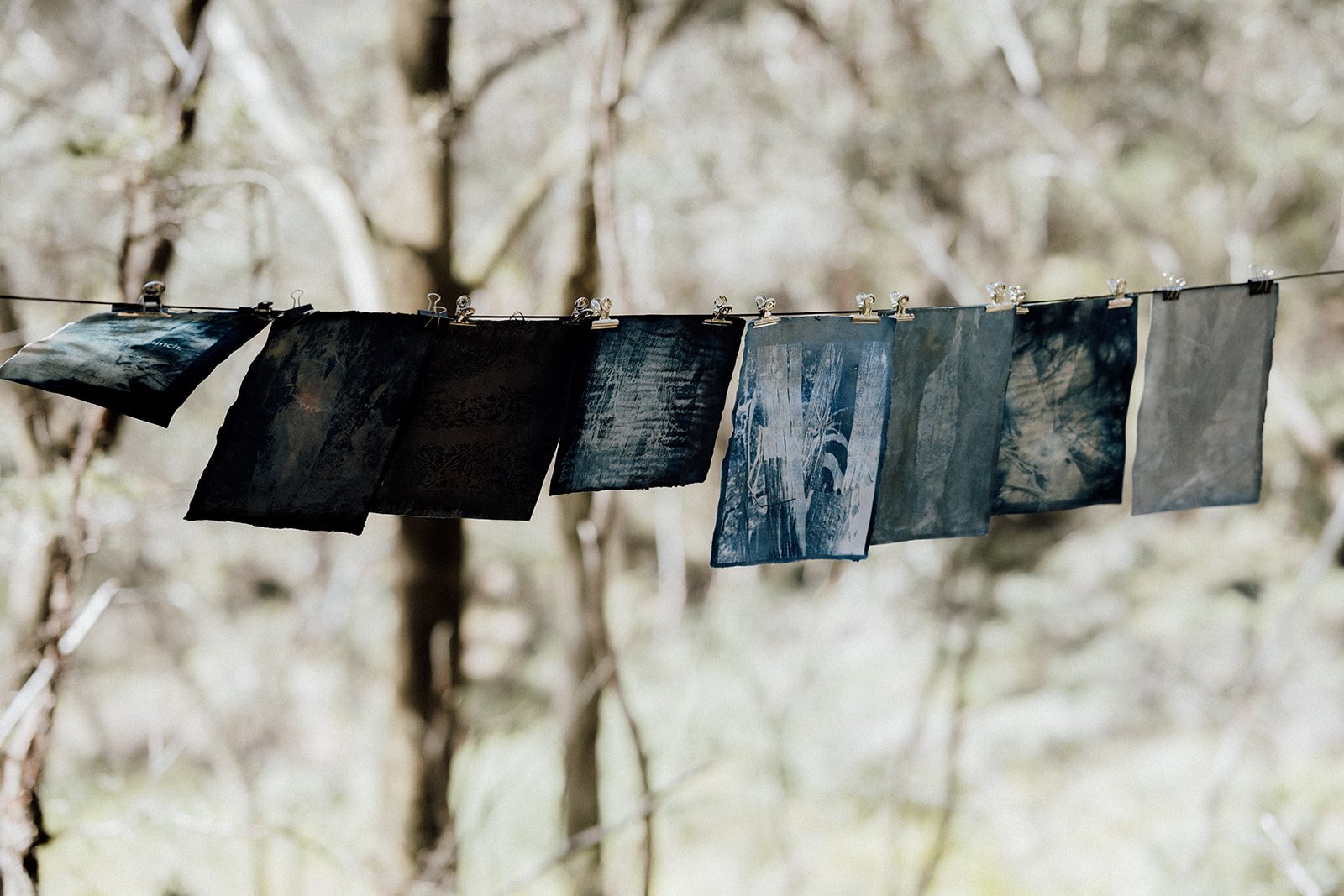
Artwork by Cheryle Yin Lo, Image by Ona Janzen

Artwork by Cheryle Yin Lo, Image by Ona Janzen
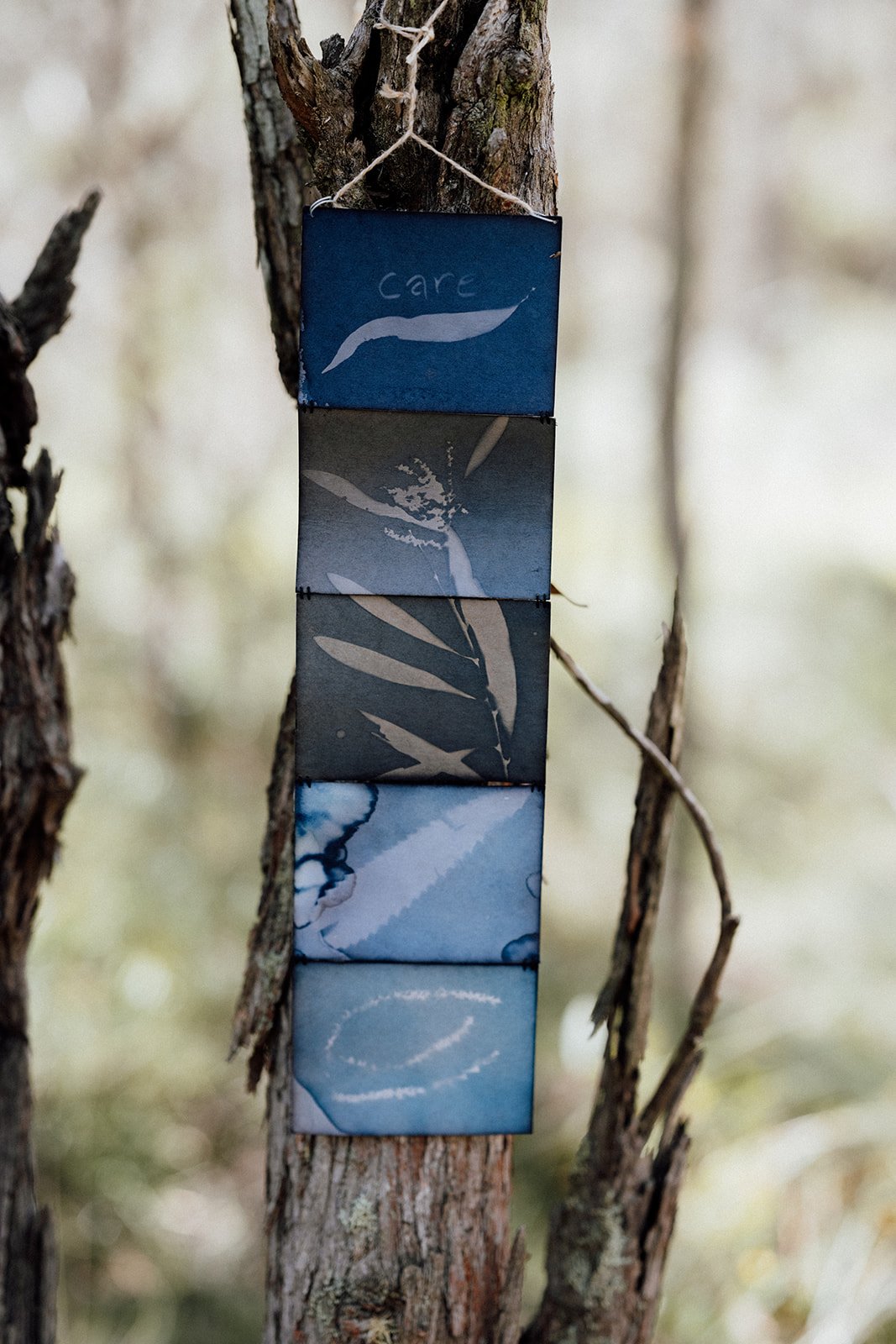
Artwork by Brooklyn Sulaeman, Image by Ona Janzen
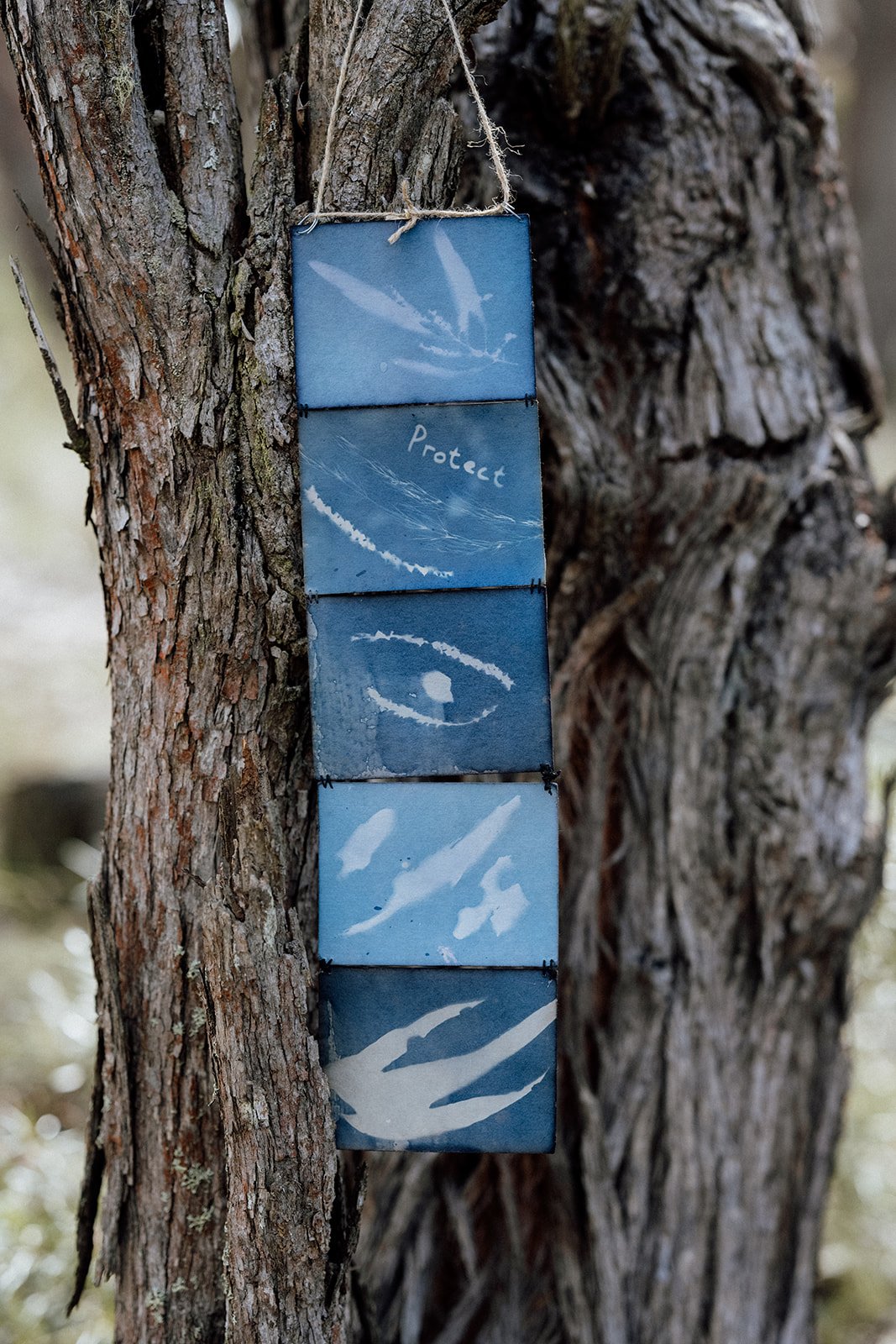
Artwork by Brooklyn Sulaeman, Image by Ona Janzen

Artwork by Brooklyn Sulaeman, Image by Ona Janzen
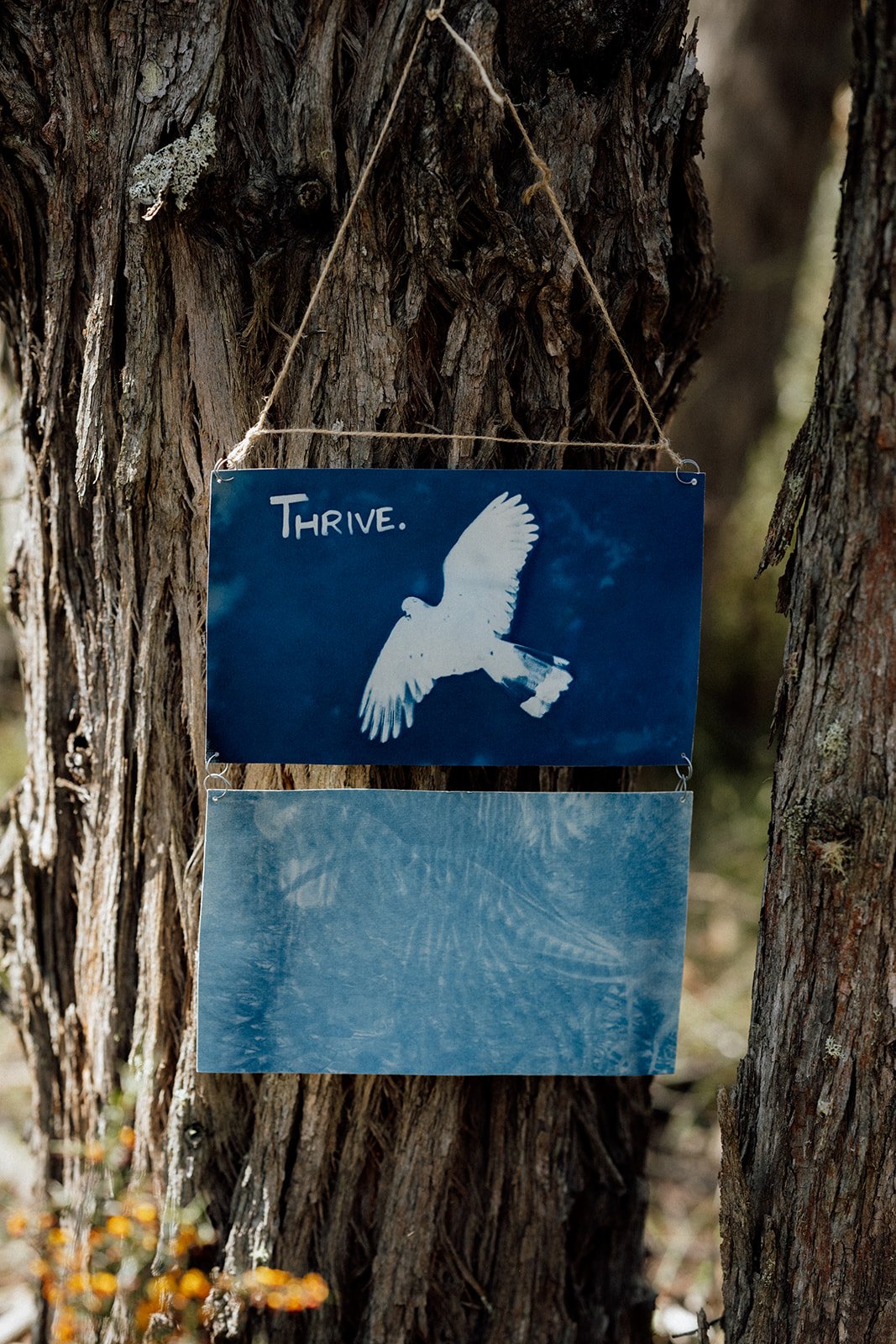
Artwork by Brooklyn Sulaeman, Image by Ona Janzen

Artwork by Fiona Vaughan, Image by Ona Janzen

Artwork by Fiona Vaughan, Image by Ona Janzen

Artwork by Fiona Vaughan, Image by Ona Janzen
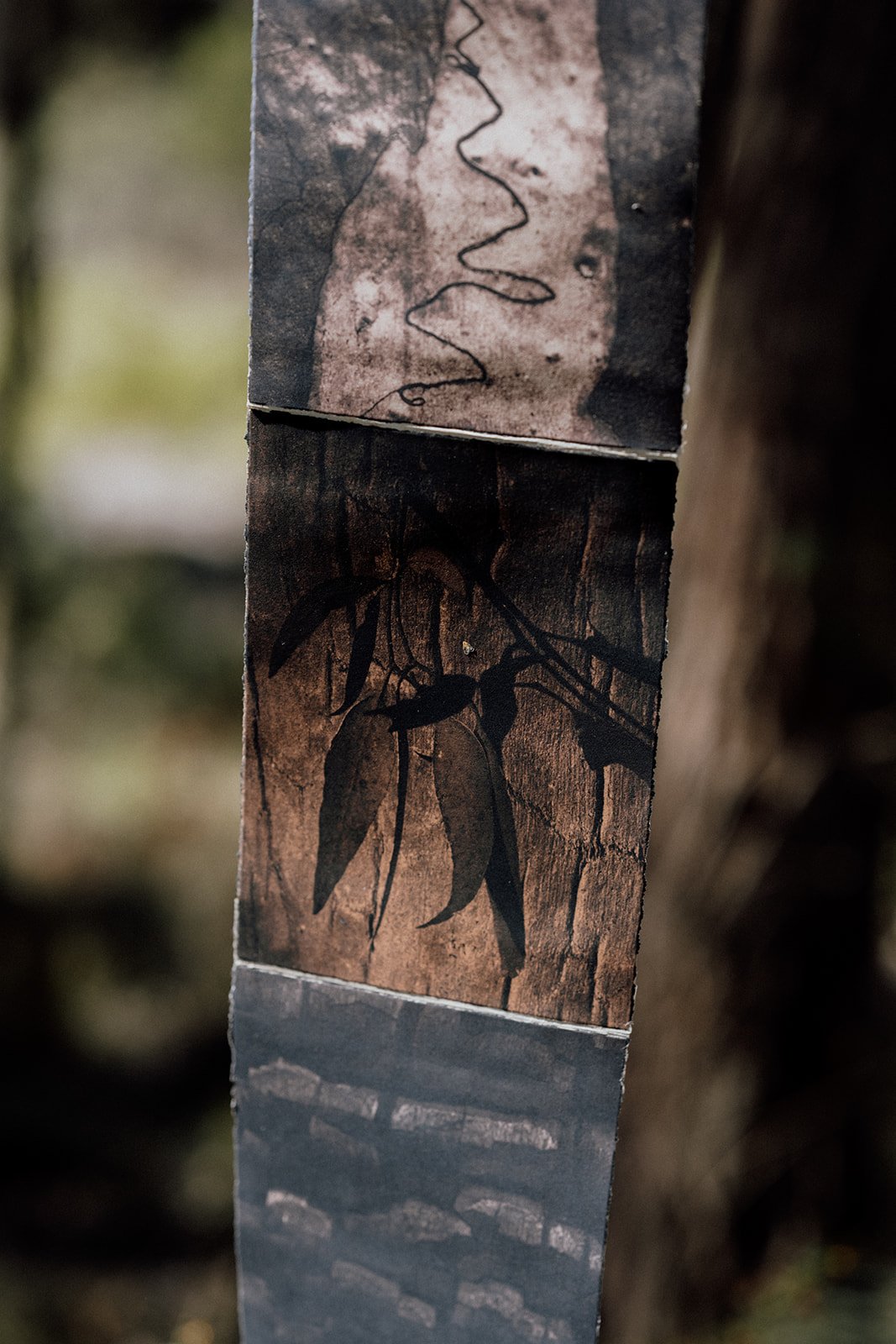
Artwork by Fiona Vaughan, Image by Ona Janzen

Artwork by Kate Reid, Image by Ona Janzen

Artwork by Kate Reid, Image by Ona Janzen

Artwork by Kate Reid, Image by Ona Janzen

Artwork by Kate Reid, Image by Ona Janzen
